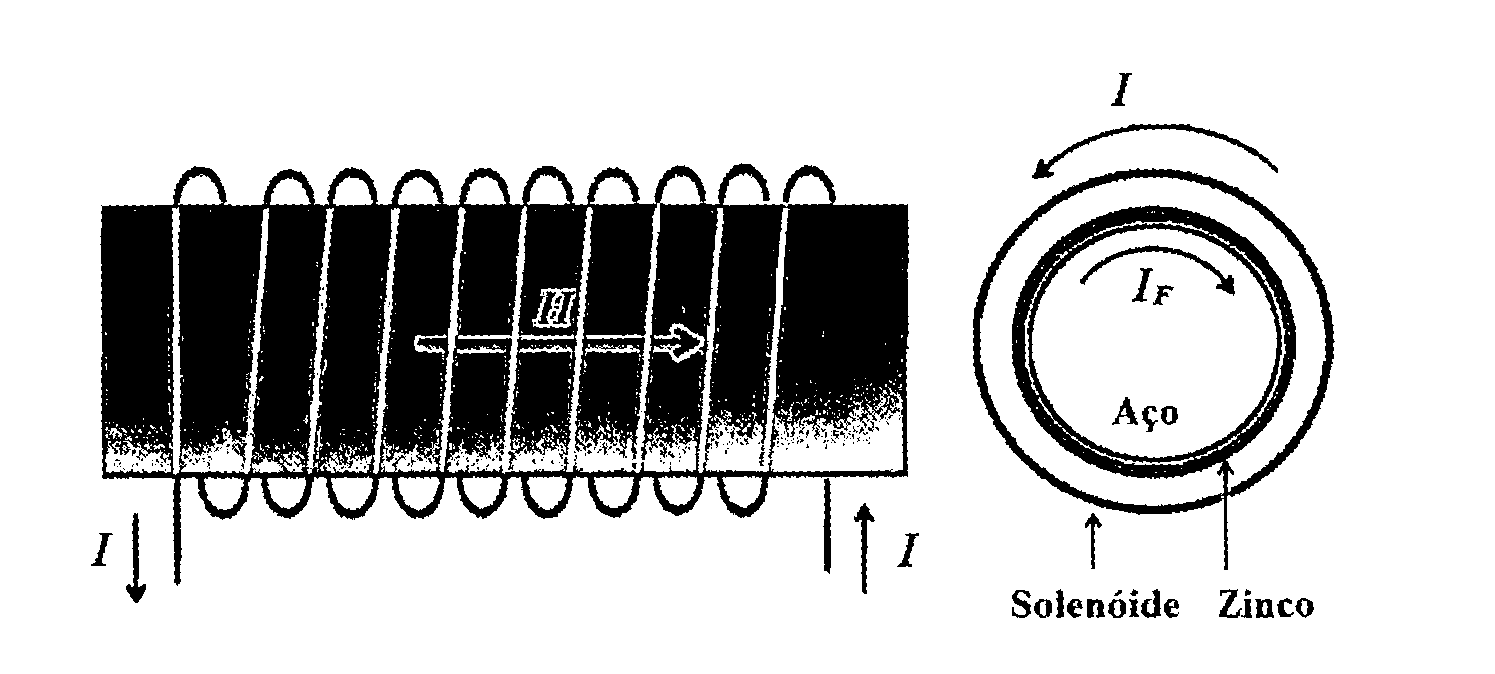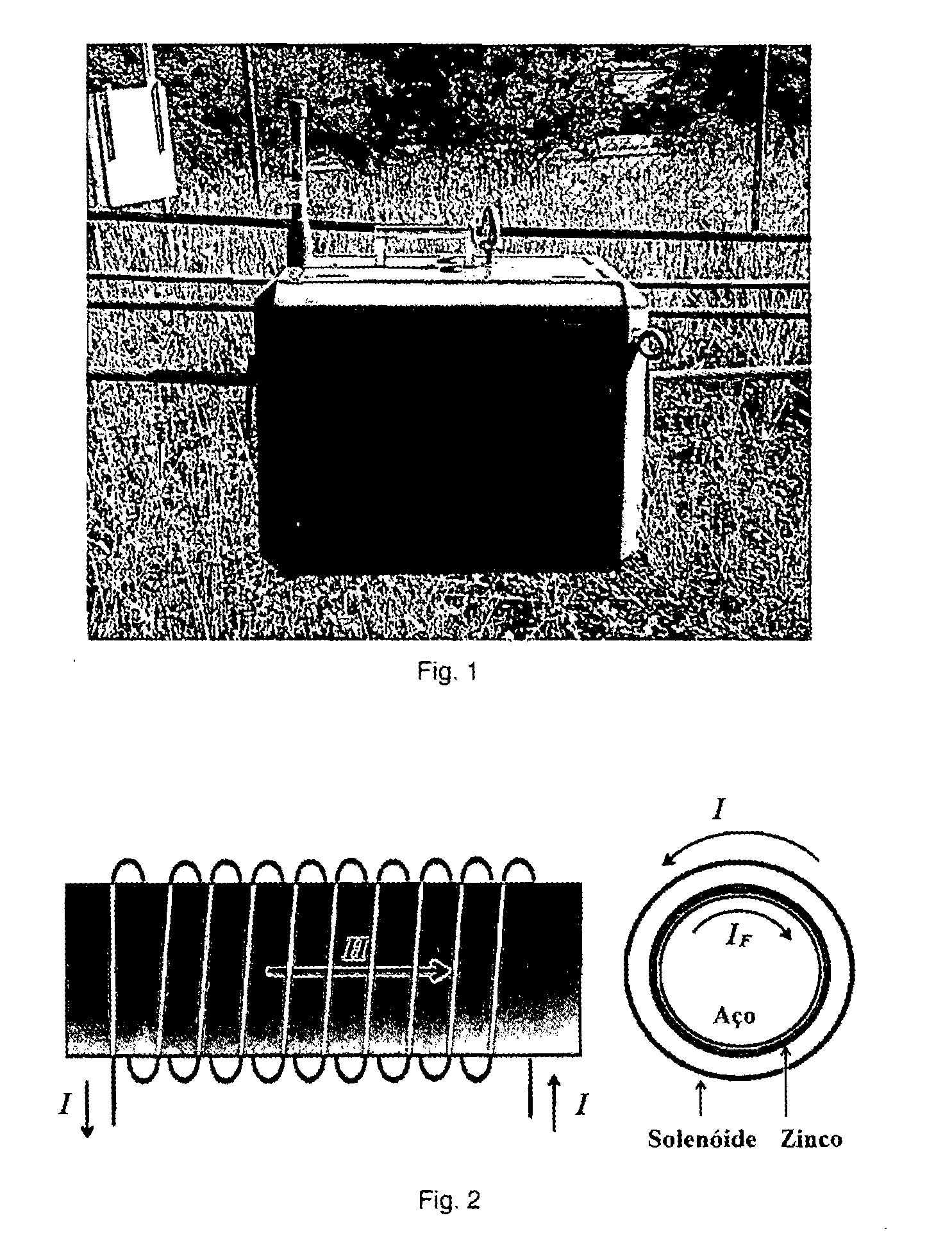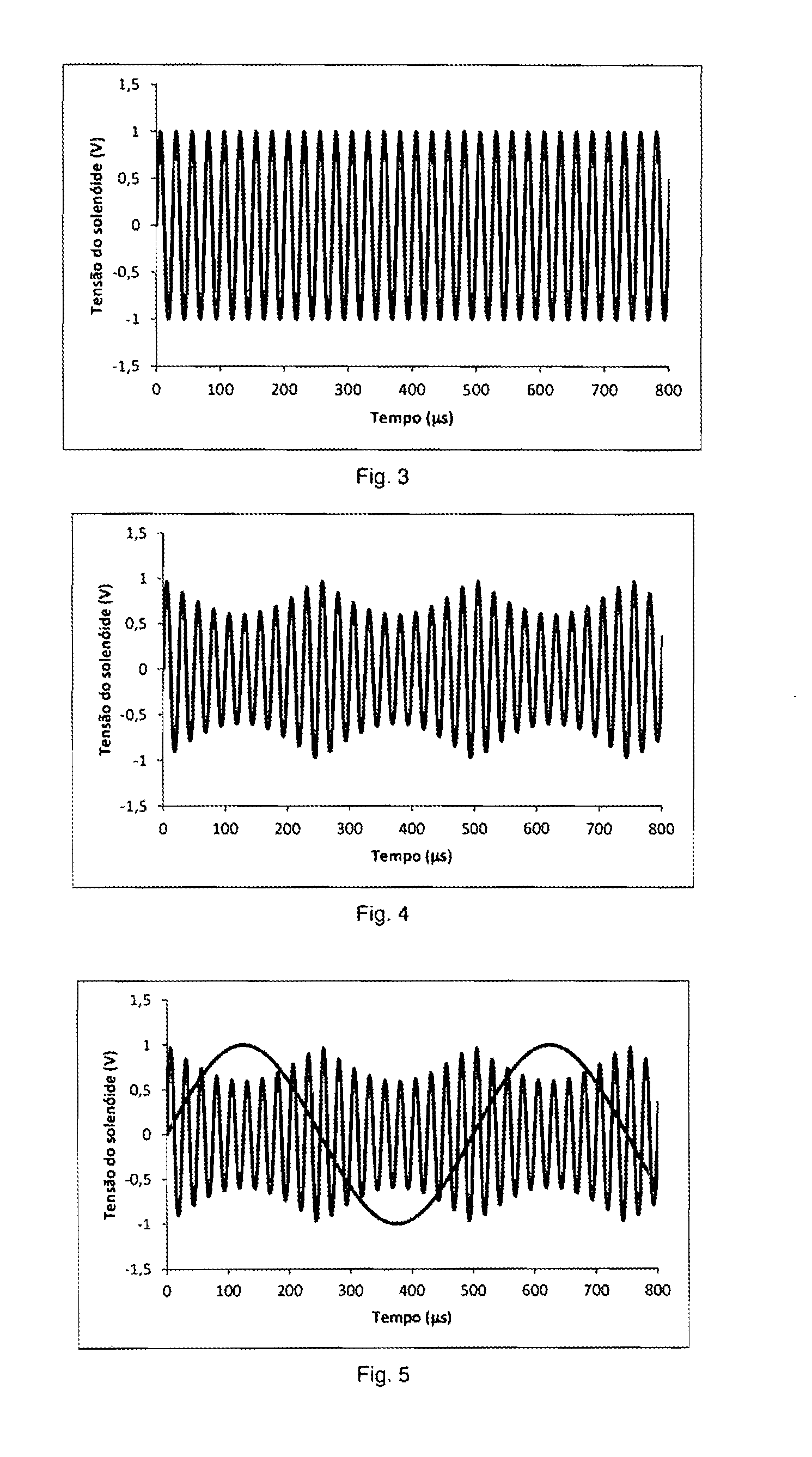Device and method for inspecting aluminum cables with a steel core (aluminum conductor steel reinforced - ascr) installed in energized electrical energy lines
a technology of aluminum conductors and steel cores, applied in measurement devices, scientific instruments, instruments, etc., can solve the problems of wrt technique affecting the subjectivity of lf (local fault) reading, wrt technique presenting some disadvantages for wrt conductor inspection, etc., to achieve the effect of reducing maintenance costs, increasing the continuity of electrical energy supply, and increasing efficiency
- Summary
- Abstract
- Description
- Claims
- Application Information
AI Technical Summary
Benefits of technology
Problems solved by technology
Method used
Image
Examples
Embodiment Construction
[0048]The cable inspection device loaded onto a remotely-controlled robot, which is installed in the conductor of an energized electrical line. This robot communicates with a computer located at ground level through a radio beam, in such a way that the operator is able to supervise the data from the robot and control its movement. The data obtained by the ECT sensor are also transmitted to a computer, where they are shown on the screen and stored for subsequent analysis. Simply for illustrative purposes, FIG. 1 shows a photograph of the robot developed, which carries with it the ECT sensor which is the object of this patent application.
[0049]Below are described the techniques developed to allow the use of ECT in the inspection of energized lines. This techniques seek to:[0050]Compensate for the modulation of the magnetic permeability of the steel;[0051]Compensate for the effect of the temperature on electrical conductivity;[0052]Increase the sensitivity of the ECT reading.
[0053]Tech...
PUM
| Property | Measurement | Unit |
|---|---|---|
| temperature | aaaaa | aaaaa |
| frequency | aaaaa | aaaaa |
| frequency | aaaaa | aaaaa |
Abstract
Description
Claims
Application Information
 Login to View More
Login to View More - R&D
- Intellectual Property
- Life Sciences
- Materials
- Tech Scout
- Unparalleled Data Quality
- Higher Quality Content
- 60% Fewer Hallucinations
Browse by: Latest US Patents, China's latest patents, Technical Efficacy Thesaurus, Application Domain, Technology Topic, Popular Technical Reports.
© 2025 PatSnap. All rights reserved.Legal|Privacy policy|Modern Slavery Act Transparency Statement|Sitemap|About US| Contact US: help@patsnap.com



